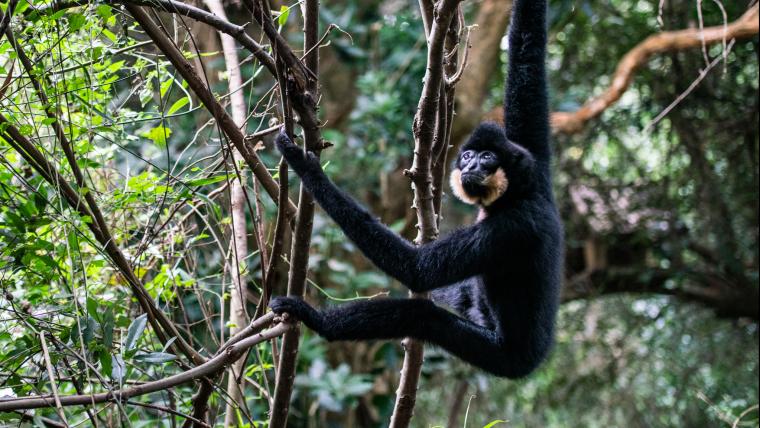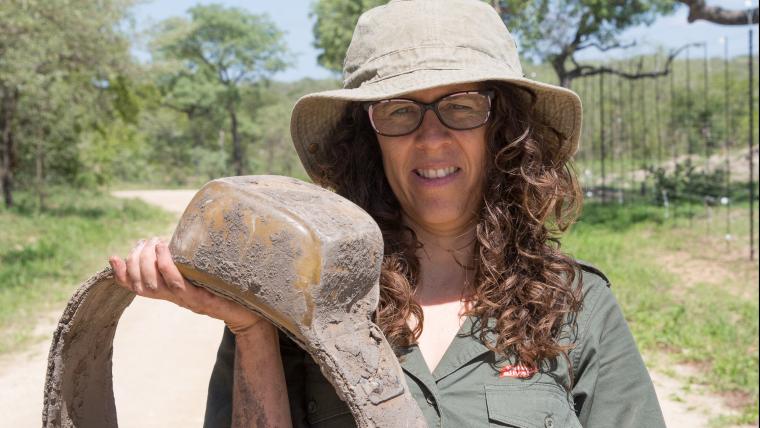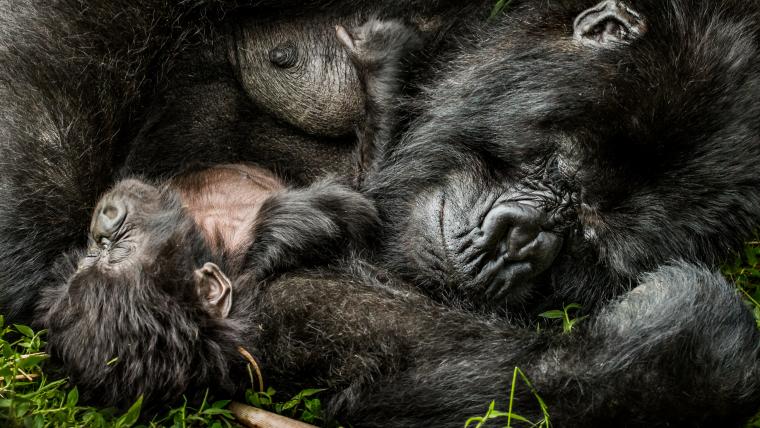
From cages to canopies, these gibbons are back in full swing
With arms nearly twice the length of their bodies, gibbons can swing from branch to branch with grace and ease. The apes originate from tropical forests in Asia, where their homes are abundant in leafy tree canopies. But because they’re seen as exotic creatures, they’re also bred in captivity and confined behind bars for human entertainment. These gibbons were relocated across continents from zoo to zoo and given very little space to move. Without trees, they grew up lacking the experience to perform their determining behaviour.
In their natural habitat, gibbons feed on the fruit the forest provides, occasionally chomping on nutritious insects. Their favourite treats are jungle frogs, but delicacies such as these are non-existent if the creatures are caged. Other drawbacks extend to family relationships. In captivity, gibbons form weak bonds with each other. They’re actually monogamous – a rare trait in primates – and live in tight groups consisting of an adult pair and their offspring. Each brood will choose a territory and defend it from threats using their booming voices, which can be heard up to one kilometre away. Sometimes the whole troop will join in, singing in unison.
Gibbons clearly deserve a large space where they can be together. Fortunately, these caged primates were eventually rescued and rehomed in a 23-hectare forest at Monkeyland KwaZulu-Natal. At first, they had no idea how to swing from branches. But after climbing up and down for a few weeks, the gibbons soon began to sway beneath the foliage. When given a place to call home, animals will always return to their natural instincts.






























Please sign in to leave a comment